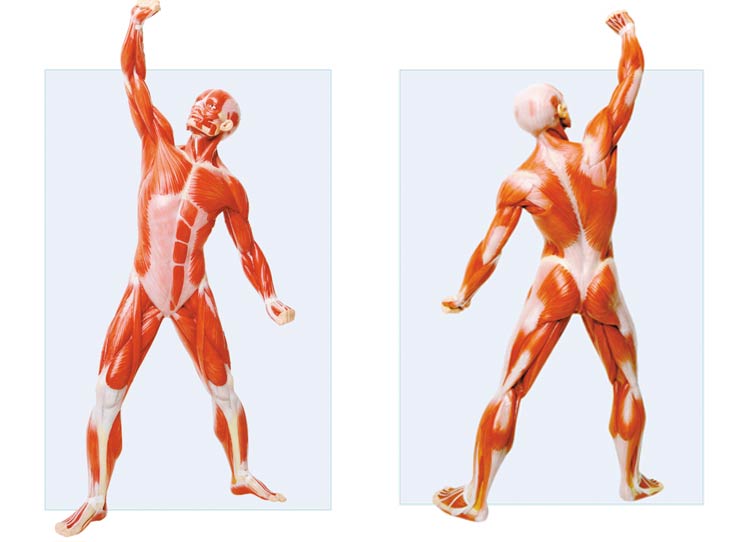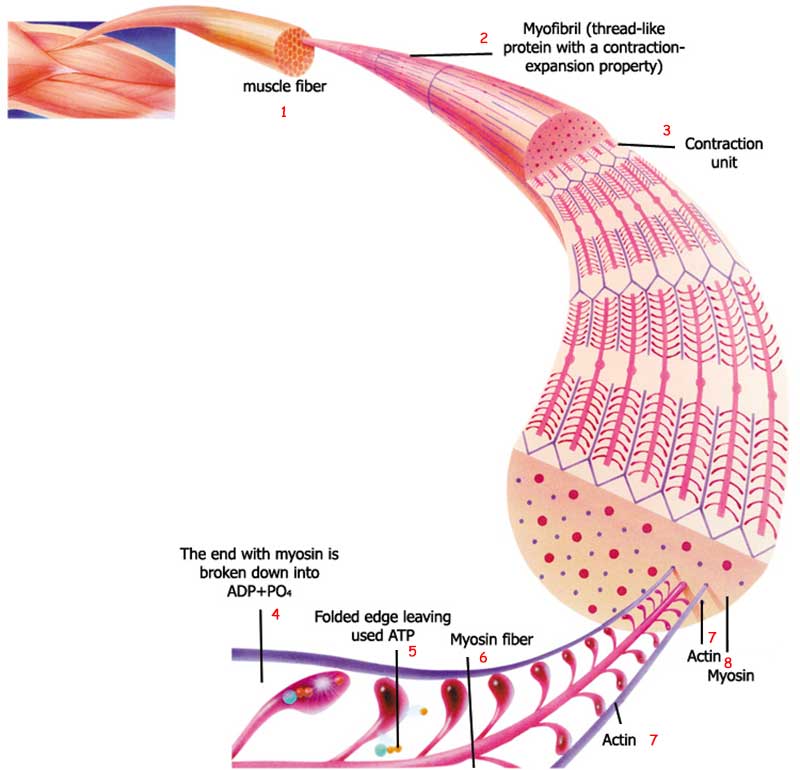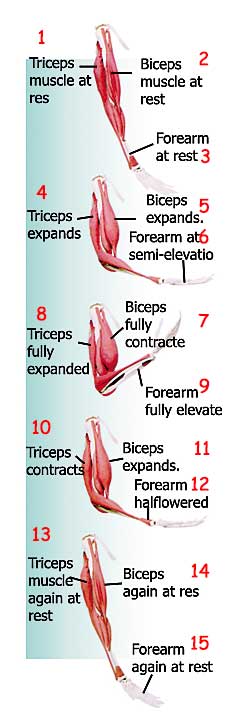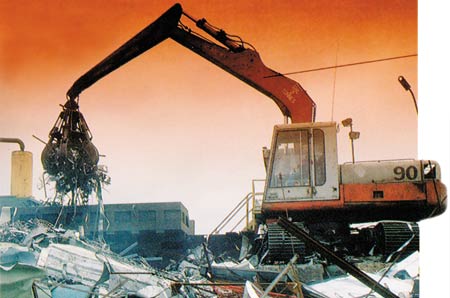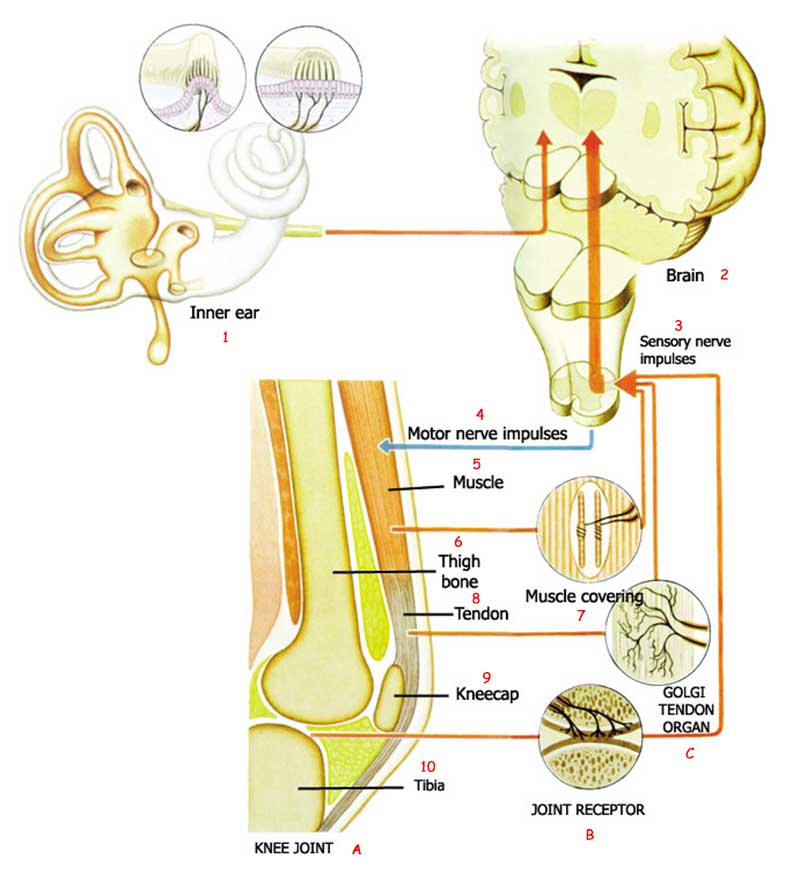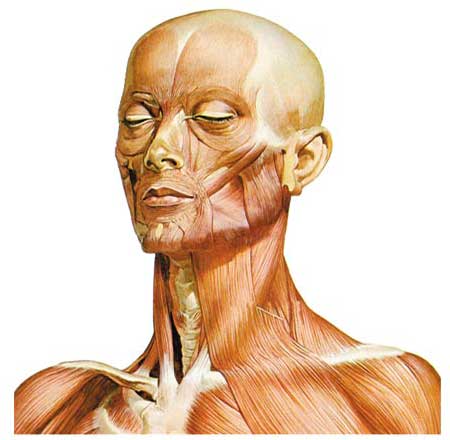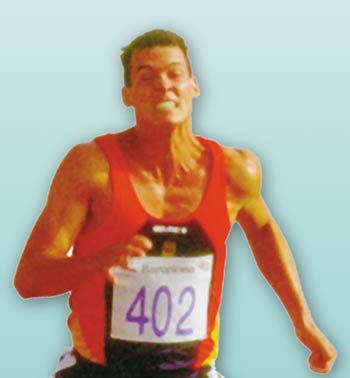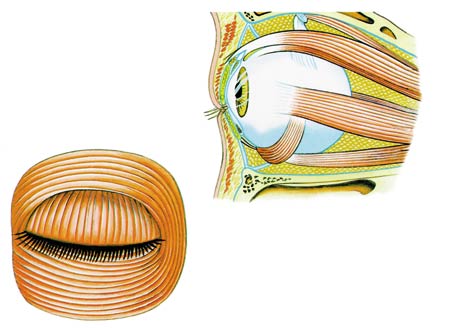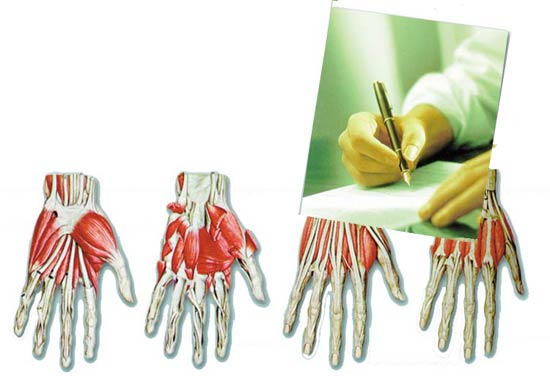Bigotry: The Dark Danger
The Human Miracle

DOWNLOAD THE BOOK
CHAPTERS OF THE BOOK
- Introduction: A Short Voyage Through The Human Body
- The Body’s Transport Network: The Circulatory System - 1/3
- The Body’s Transport Network: The Circulatory System - 2/3
- The Body’s Transport Network: The Circulatory System - 3/3
- The Digestive System - 1/3
- The Digestive System - 2/3
- The Digestive System - 3/3
- The Body's Purification Plant: The Excretory System - 1/2
- The Body's Purification Plant: The Excretory System - 2/2
- Splendid Communication within The Body: The Hormone System
- Your Internal Air-Conditioning: The Respiratory System
- A Resistant Structure: The Skeletal System
- Powerhouses in The Body: The Muscles
- Conclusion: Human Beings are Created By Allah
- The Deception of Evolution
< <
13 / total: 15
Powerhouses in The Body: The MusclesAcar has one single engine. Airplanes often fly with two or four. How many “engines” enable you to hold this book in your hand, or to take a single step? Billions! Whatever you may be doing, countless microscopic engines produce the power necessary for you to perform that action. The engines in question are your muscle fibers. There are more than 6 billion of these tiny engines in your body, which allow you to drink, drive, walk, speak, allow your heart to beat, your eyelids to blink, and let you eat and turn your head. Even as you read these lines, the movement of your eyes takes place thanks to the energy produced by these tiny motors. The size of the muscle cells depends on where they are used. Some may be no more than 1/100,000th of a centimeter in size, whereas others can be 3 centimeters (1.18 inches) long. 73 These tiny muscle fibers come together to constitute larger powerhouses—the muscles themselves. For example, the muscle that permits you to contract your forearm consists of the combination of millions of tiny motors. There are more than 400 of these powerhouses, large and small, in your body. Some—those that regulate the amount of light entering the eye, for example—are very small. of whatever size, however, all are powered the same way: Billions of tiny engines work together to allow the muscles to act. When you pick up a pen, for example, more than 100 individual muscles go into action. 74 The working systems of all the muscles in your body have been set out within very sensitive bounds. In addition, your muscles need to cooperate in order for you to be able to move. One of the muscles’ most important features is their being linked to a control system that permits us to survive.
The Control System in the MusclesHuman muscles are divided into two kinds: those voluntary muscles that you can control and those involuntary ones that you cannot. In order to be able to move our voluntary muscles, you need to think and make a decision. For example, when you want to bend your arm, the muscles contract in the light of the command from your brain, and movement then takes place. Control of the involuntary muscles, however, does not depend on your wills. Since these involuntary muscles’ functions are of vital importance, their expansion and contraction is controlled by the autonomous nervous system. Thanks to this, your heart, stomach and intestines perform their vital functions, all beyond your volition. This is a most essential precaution to preserve human life.
What would happen if the control of the muscles in question were at this very moment left up to you? Imagine that the control of just one involuntary muscle—, your heart muscle, for instance—was left up to you. You would have to devote all your time to contracting and expanding your heart, to the total exclusion of everything else. As soon as you fall asleep death will inevitably follow, since you will be unable to supervise your heart’s functioning. Your heart muscle must never stop working, not even for a moment, not even when you sleep: The heart continues working, though it does slow down. You therefore need to adjust your heartbeat according to prevailing circumstances. This one example is enough to see how truly wise and flawless are the boundaries set out with regard to the muscles. Certain muscles are under the individual’s control at some times, and outside it at others. For example, you can open and close your eyelids at will as well as by blinking—a reflex beyond your control. The diaphragm muscle that allows you to breathe is another that can be consciously controlled, but it works automatically during the course of your day-to-day life. Many other muscles have their own particular ways of working. Many people are quite unaware of when they should be working and when not, but thanks to the perfect control system created inside the body, there is no reason ever to think about such things. In the face of this considerable facility, a person’s only responsibility is to give thanks to the Lord, the infinitely merciful and compassionate, and to behave ways that will be pleasing to Him. Who could do greater wrong than someone who is reminded of the Signs of his Lord and then turns away from them, forgetting all that he has done before? We have placed covers on their hearts, preventing them from understanding it, and heaviness in their ears. Though you call them to guidance, they will nonetheless never be guided. (Surat al-Kahf: 57) High-Performance EnginesMuscle fibers work with a 25% efficiency level—more or less the same as that of modern car engines. But how do the muscle fibers actually work? Again, we can answer that question with a comparison to a car’s engine. Any engine needs fuel to make it work. The fuel used by the muscles is the sugar, or glycogen, carried in the bloodstream. Some of this high-octane fuel is stored in the muscles. In car engines, fuel is injected into the pistons, and a spark ignites the atomized gasoline. The piston expands, and the car’s regular motion is ensured by means of a series of explosions— all features built into engines by industrial design. However, the creation of a muscle cell is far superior. This tiny cell performs both the ignition and piston functions, extracting the energy from the sugar molecule and using it in its own contraction. Both the extraction of energy from chemical molecules and the transformation of that energy into physical force take place within the muscle cell.
The energy produced affects the proteins that constitute the muscle cell. As the proteins attract one another, the muscle cells contract. As a result of thousands of cells moving at the same time, an entire muscle contracts and shortens. Tendons attaching the muscles to the bones move the bones as a result of that contraction. These contractions can produce considerable force. For example, in order for your arm to bend at the elbow, it’s enough for your forearm muscles to contract by 2 centimeters (0.8 inches). This contraction pulls the arm bone and leads to the whole arm bending. All the muscles you use to move work in basically the same way. But even the simplest actions, such as opening and closing your eyelids, require several muscles working together. Igniting the Fire: the Engines in the Muscles
When you go to bend your arm, an electrical signal departs from your brain. During its complicated journey, the signal first passes to the spinal column, from where it proceeds at high speed to the organ where the message needs to be delivered. An electrical current moves over the muscle surface. The millions of muscle fibers receive the signal react immediately and “fire the ignition” by contracting. These events all take place in the blink of an eye: in as little as one thousandth of a second. In other words, the electrical current moving through the muscles turns the ignition switch in the muscle fibers by moving at a speed of 1/1,000th of a second (1 millisecond). The command reaching the muscles is produced and transported in the nervous system. The muscular system therefore functions under the command of the nervous system, but the way the muscles work together in harmony results from the coordination of the body. The Body’s Communications NetworkThe first condition for coordination is obtaining accurate information. Only with accurate information can new analyses be performed. And in order for the muscles to function correctly, there is a magnificent reception network in the body. To carry out a coordinated action, first the location involved in that action must be known. That information comes from the eyes, the balance mechanism in the inner ear, the muscles, the joints and the skin. Every second, billions of pieces of information are processed, analyzed, and new decisions taken as a result. Millions of receptors located in the body provide information. Inside the muscles and joints, billions of micro-receptors provide information at any given moment. Messages from these receptors reach the central nervous system, and new instructions are issued to the muscles in accord with the analyses performed there.
For a clearer example of this coordination, simply raise your hand. Your shoulder has to bend, the biceps muscle must expand and the triceps must contract. Muscles between your elbow and wrist have to turn your arm, and the muscles controlling your fingers have to give your hand the correct shape. At every stage of this action, millions of receptors in the muscles report the status of the muscles to the central control system. A moment later, the center tells the muscles what to do next. You are of course unaware of these chemical and physical reactions taking place at breathtaking speed; you merely want to raise your hand. Nor do you make any special effort in order to speak. You never sit down and calculate what sounds you want to emerge from your mouth, how much your vocal chords need to vibrate and which of the hundreds of muscles in your mouth, tongue and throat need to contract and expand—how many times, in which order and at what level—how much air to take into your lungs, or at what speed and intervals you need to exhale that same air. The nervous system is aware of not just the muscles, but also of the status and functioning of the internal organs. This information too is processed and the necessary measures taken. Even while you sleep, your vital organs continue to function, thanks to instructions received from another part of the nervous system—the sub-brain and spinal cord. Your heart beats, your lungs work, and you breathe. The body’s speed of information-processing is far beyond that of any computer. Whatever you do, from the simplest task to the most difficult, your body performs unbelievable calculations. Clearly, all this takes place as the result of a creation requiring infinite might. That infinite might belongs to Almighty Allah, Creator of the entire universe. ... No, everything in the heavens and Earth belongs to Him. Everything is obedient to Him. (Surat al-Baqara: 116)
The Harmonious Working of the Muscles
For just a small smile, seventeen separate muscles have to act at the same moment and perform their correct functions. If just one of those 17 muscles fails to function correctly, then the smile will not appear, and furthermore the person’s facial expression cannot be interpreted. In the human face, there are 28 muscles whose sole task is facial expression. By contracting in various combinations, these muscles can produce thousands of different expressions. The human face has an expression, shaped by the muscles, for every state of mind, such as anger, surprise, comfort, and enjoyment. For you to take one simple step, 54 separate muscles in your feet and back have to work in harmony together. Holding a flower or drinking a glass of water is possible thanks to the help of 27 bones and the perfect muscular and nervous systems that direct them. Functions such as smiling, speaking, blinking, walking and running may be very familiar, but nonetheless everyone who reads about them must stop once again and think. All the muscles, bones and cells operate independently of the individual. No one has any power to add any new organ. Even modern technology can not produce systems similar to those in the human body. For that reason, people must not forget for even a moment that they are indebted to this flawless system in their bodies—in other words, to Allah Who created it for them—every time they smile, and must give thanks for it.
Allah has created human beings in a perfect manner. As is revealed in verses He has formed and proportioned them. The human body is one of the proofs of Allah’s power and infinite knowledge. Everyone capable of using his or her reason will clearly see this truth. “O man! What has deluded you in respect of your Noble Lord? He Who created you and formed you and proportioned you and assembled you in whatever way He willed. . . . ” (Surat al-Infitar: 6-8)
Blinking and Load-BearingEvery one of the hundreds of muscles in the body has unique features such as its length, lifting power, ability to perform sensitive processes, and elasticity. Muscles perform a great many different functions, from simple actions such as blinking the eyelids to lifting heavy weights. In their structure, for example, the eye muscles are very different from those in the arms or legs. One feature all muscles have in common, however, is that they work at a high productivity, in flawless harmony and produce considerable force. The total power of all the muscles in your body is so considerable that if it were possible to employ all the muscles at once, then you would be strong enough to lift a large truck. 75 As we’ll consider in detail in the following sections, that every muscle has its own particular attributes shows the existence of a manifest creation. The location of every muscle in just the right place, their ideal sizes, elasticity and capacities are all very different, but cannot be explained in terms of chance. Every muscle has been located in just the right place, with just the right features. For example, it would be meaningless for an eye muscle to have the same features as ones in the arm. Far from being beneficial, it would be positively damaging for a muscle similar to the heart muscle, which works involuntarily, to be in our leg muscles. Indeed, none of these mismatches occur. Every muscle is in just the right location, with just the right characteristics.
If you want to lift anything, your central nervous system has to know the present length of your arm muscles, their condition and tension, to provide the most appropriate contraction. When your arm has reached the object in question, the central nervous system must halt the contraction while setting into action the muscles of the hand that will take hold of the object. Once you have grasped the object, the necessary information for extending your arm must be transmitted to the special sense organs known as muscle marrow. If the chemical mechanism essential for us to perform any action is obstructed for any reason, the end result is paralysis. Paralysis means the loss of a muscle’s function, due to the incapacity of the nerves leading to it. Someone with a paralyzed arm, for instance, is quite unable to move it. The nerve cells extending to the bicep and triceps have lost their function and are unable to forward on instructions from the brain telling these muscles to contract. The arm is thus unable to function, even if it is otherwise healthy. One single nerve cell failing to forward a signal is sufficient for an organ failing to work. Therefore, the lack of just one component of a system will result in its collapse. In addition, as you have seen, there is stage-by-stage flow of information in the working of the muscles. Wherever information exists, intelligence is also needed for all the elements in the system to understand and act on the arriving messages. In this case, the muscles act in accordance with the instructions they receive from the spinal cord. In addition, your voluntary muscles work when you want them to—so in order for them to act, the need to know what you are thinking. View in this way, it’s clear that the information possessed by the muscles, the system that ensures the links between them, or their ability to obey our thoughts can never come into existence by chance. Yet also, muscle cells clearly cannot exhibit intelligence. This system has existed since the first human came into being, and has been working perfectly ever since. The muscles of the first human possessed the same information as will those of every other human who ever comes into the world. That is because Allah has created human beings in a perfect proportion. Everything we have learned leads us to the glory and superior might of Allah. It is Allah Who made the Earth a stable home for you and the sky a dome, and formed you, giving you the best of forms, and provided you with good and wholesome things. That is Allah, your Lord. Blessed be Allah, the Lord of all the worlds. He is the Living–there is no deity but Him—so call on Him, making your religion sincerely His. Praise be to Allah, the Lord of all the worlds. (Surah Ghafir: 64-65) The Reason for Ease of Movement: Flawless HarmonyMuscles in the human body always move in one direction. The bicep, for example, bends the arm, but cannot restore it to its former position. The triceps muscle is therefore needed to straighten the arm out again, to its former position. These muscles have to act consecutively; otherwise, if one were to start contracting while the other was still functioning, the arm could not move at all. Flawless coordination regulates the order in which the muscles in the body act. There is no doubt that the bones are the most important factor in the transformation into energy of the power produced in the muscles. As a muscle contracts, it pulls on a bone and enables it to move. Opposing muscles are perfectly and securely attached to the bones by ligaments so that they can move in both directions. Were it not for the bones, the strength the muscles produce could not be translated into movement. Similarly, were it not for the muscles, the bones could not move at all. In order for a human to move, more than 200 bones and 400 muscles must work together in a coordinated manner. The bones are joined to one another to permit the most ideal movement. Each muscle has been located in such a way as to allow the bones to move comfortably. Obvious creation can be observed in every detail, from the movement permitted the body by these dual systems, to the structure of the tendons joining muscle to bone. Bones never separate from one another because they are loosely connected, and muscles are never prevented from moving because the joints between bones are too tight. Of course, the bone tissue or the cells that comprise that tissue do not make these decisions. Cells and tissues are devoid of consciousness. Nor is it possible for this information to be placed inside the cell in any way. There must therefore be some Force that installs this information in the cell, that teaches it how to behave—that rules it, in other words. This incomparable knowledge and might belong to Allah, Who maintains everything under His control. Do you not know that Allah is He to Whom the kingdom of the heavens and the Earth belongs and that, besides Allah, you have no protector and no helper? (Surat al-Baqara: 107)
|
||||||||||||||||||||||||||||||||||||||||||||||||||||||||
13 / total 15
You can read Harun Yahya's book The Human Miracle online, share it on social networks such as Facebook and Twitter, download it to your computer, use it in your homework and theses, and publish, copy or reproduce it on your own web sites or blogs without paying any copyright fee, so long as you acknowledge this site as the reference.
